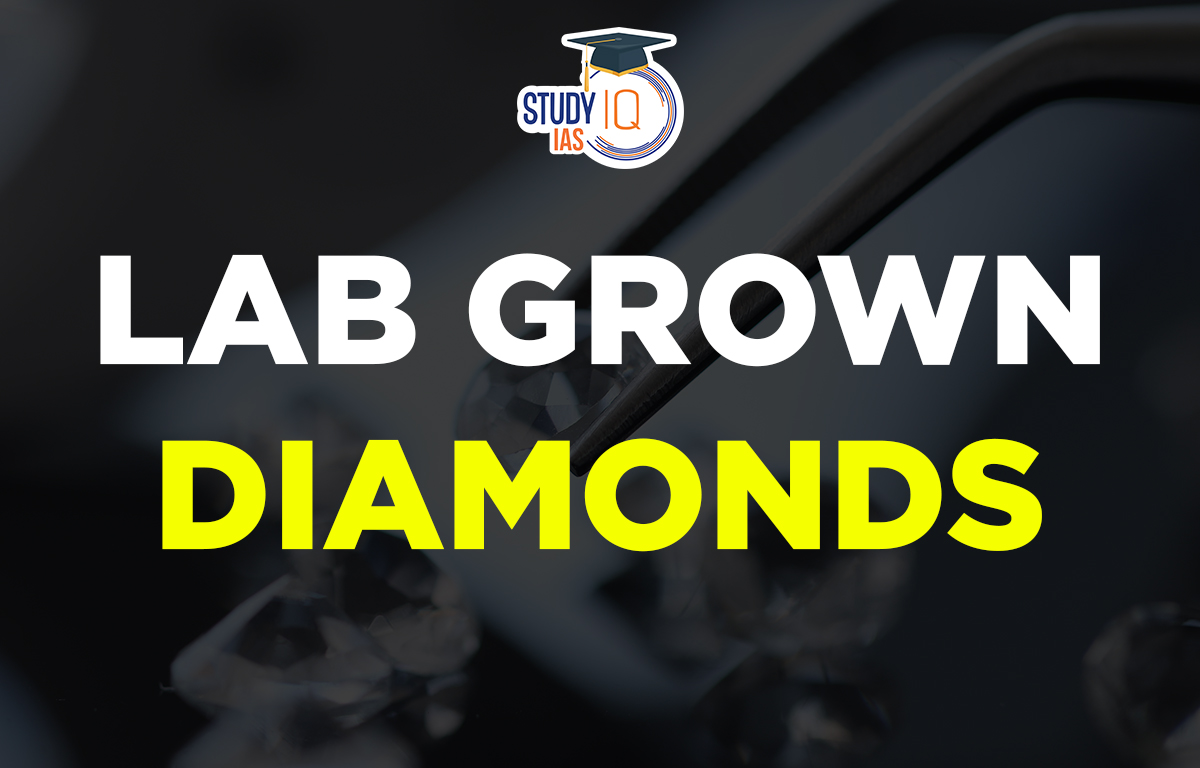Table of Contents
In News: In the Budget speech made by the Finance Minister, the government’s move to focus on lab-grown diamonds was announced.
About the News
- It was announced that the Customs duty on the seeds used in lab-grown diamond manufacturing will be reduced.
- A grant to IITs to facilitate the growth of LGDs in India was announced.
Provisions for LGDs in the Budget
- India is a global leader in cutting and polishing natural diamonds, but as its resources are becoming scarce, the industry is shifting towards LGDs.
- Reducing custom duties: The 2023 Union Budget promises to reduce the basic customs duty on seeds used in the manufacture of lab-grown diamonds in a bid to popularise their production in India— the duty on seeds for rough LGDs will be reduced from 5% to nil. The change will come into effect starting February 2, 2023.
- Research grant: A five-year research grant will also be provided to one of the Indian Institute of Technologies (IITs) for research and development in the field of LGDs.
- New tariff lines: A proposal for the creation of new tariff lines to help in better identification of a number of products, including synthetic diamonds has also been made.
What are Lab-Grown Diamonds?
- Lab-grown diamonds are diamonds that are produced using specific technology which mimics the geological processes that grow natural diamonds.
- The world’s first-ever LGD was created in 1954 by scientists working at a General Electric research laboratory in New York.
- They are not the same as “diamond simulants” – LGDs are chemically, physically and optically diamond and thus are difficult to identify as “lab-grown.”
- While materials such as Moissanite, Cubic Zirconia (CZ), White Sapphire, YAG, etc. are “diamond simulants” that simply attempt to “look” like a diamond, they lack the sparkle and durability of a diamond and are thus easily identifiable.
- However, differentiating between an LGD and an Earth Mined Diamond is hard, with advanced equipment required for the purpose.

How are they Produced?
There are multiple ways in which LGDs can be produced.
- The most common (and cheapest) is the “High pressure, high temperature” (HPHT) method.
- As the name suggests, this method requires extremely heavy presses that can produce up to 730,000 psi of pressure under extremely high temperatures (at least 1500 Celsius).
- Usually, graphite is used as the “diamond seed” and when subjected to these extreme conditions, the relatively inexpensive form of carbon turns into one of the most expensive carbon forms.
- Other processes include “Chemical Vapor Deposition” (CVD) and explosive formation that creates what is known as “detonation nanodiamonds”.
- In the CVD method, the seed is heated to around 800 degrees Celsius inside a sealed chamber filled with a carbon-rich gas. The gas sticks to the seed, gradually building the diamond.
Characteristics and Application
- LGDs have basic properties similar to natural diamonds, including their optical dispersion, which provides them with the signature diamond sheen.
- However, since they are created in controlled environments, many of their properties can be enhanced for various purposes.
- LGDs are most often used for industrial purposes, in machines and tools.
- Their hardness and extra strength make them ideal for use as cutters.
- Pure synthetic diamonds have high thermal conductivity, but negligible electrical conductivity. This combination is invaluable for electronics where such diamonds can be used as a heat spreader for high-power laser diodes, laser arrays and high-power transistors.
Significance
- Declining natural reserves: As the Earth’s reserves of natural diamonds are getting depleted, LGDs are slowly replacing the prized gemstone in the jewellery industry.
- Low environmental footprint: The environmental footprint of a diamond grown in a laboratory is much lesser than that of a naturally-occurring diamond.
- Lower energy consumption: It takes ten times more energy to extract a natural diamond (by open pit mining) from the earth than it takes in creating one above the ground.
- Similar features: Just like natural diamonds, since LGDs also undergo similar processes of polishing and cutting, they have a similar lustre.


 Daily Quiz 05 July 2025
Daily Quiz 05 July 2025
 SSC MTS Apply Online for 1075 Posts – ...
SSC MTS Apply Online for 1075 Posts – ...
 Dynamic Pricing: What It Is and Why It's...
Dynamic Pricing: What It Is and Why It's...





















